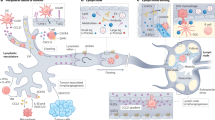Abstract
The effects of intravenous diethylamine/nitric oxide (DEA/NO), a short-acting nitric oxide (NO) donor, on systemic haemodynamics, muscle and tumour blood flow (MBF and TBF) and tumour oxygenation were examined in rats bearing subcutaneous R3230Ac carcinoma in the leg. The effects of DEA/NO on the diameters of tumour-feeding and normal arterioles were evaluated in window chambers with and without implanted tumours. DEA/NO reduced mean arterial pressure (MAP) when given at doses > or = 100 nmol kg(-1), with maximal suppression at 0.5-1 min followed by return to baseline within 20 min. DEA/NO did not affect MBF except at the highest doses (500 and 1000 nmol kg(-1)). In contrast, DEA/NO reduced TBF and constricted tumour arterioles at doses > or = 100 nmol kg(-1). Tumour arteriolar vasomotion occurred in more than half the animals during hypotension and with a significantly higher frequency than in normal granulating tissue at a dose of 500 nmol kg(-1). Normal arterioles rapidly and significantly vasodilated for about 3 min and then returned to baseline. The reductions in TBF and MAP were accompanied by synchronous reduction in tumour pO2. Our findings suggest that DEA/NO decreases TBF in two ways. In the window chamber model, vascular steal occurs as normal arterioles adjacent to tumour dilate more than tumour arterioles during the initial period of hypotension. In leg tumours, the predominant mechanism is attributable to reduced perfusion pressure induced by lowered MAP, which decreases flow to the tumour, probably because of relatively higher flow resistance. The vasoconstriction and vasomotion in tumour arterioles during DEA/NO-induced hypotension may reflect differences in regulatory metabolism of NO between neoplastic and normal arterioles. Thus, intravenous injection of a short-acting NO donor, DEA/NO, decreases MAP and heart rate, leading to subsequent decreases in tumour blood flow and oxygenation.
This is a preview of subscription content, access via your institution
Access options
Subscribe to this journal
Receive 24 print issues and online access
$259.00 per year
only $10.79 per issue
Buy this article
- Purchase on Springer Link
- Instant access to full article PDF
Prices may be subject to local taxes which are calculated during checkout
Similar content being viewed by others
Author information
Authors and Affiliations
Rights and permissions
About this article
Cite this article
Shan, S., Rosner, G., Braun, R. et al. Effects of diethylamine/nitric oxide on blood perfusion and oxygenation in the R3230Ac mammary carcinoma. Br J Cancer 76, 429–437 (1997). https://doi.org/10.1038/bjc.1997.406
Issue Date:
DOI: https://doi.org/10.1038/bjc.1997.406
This article is cited by
-
A photodynamic bifunctional conjugate for prostate cancer: an in vitro mechanistic study
Investigational New Drugs (2017)
-
Quantification of longitudinal tissue pO2 gradients in window chamber tumours: impact on tumour hypoxia
British Journal of Cancer (1999)



